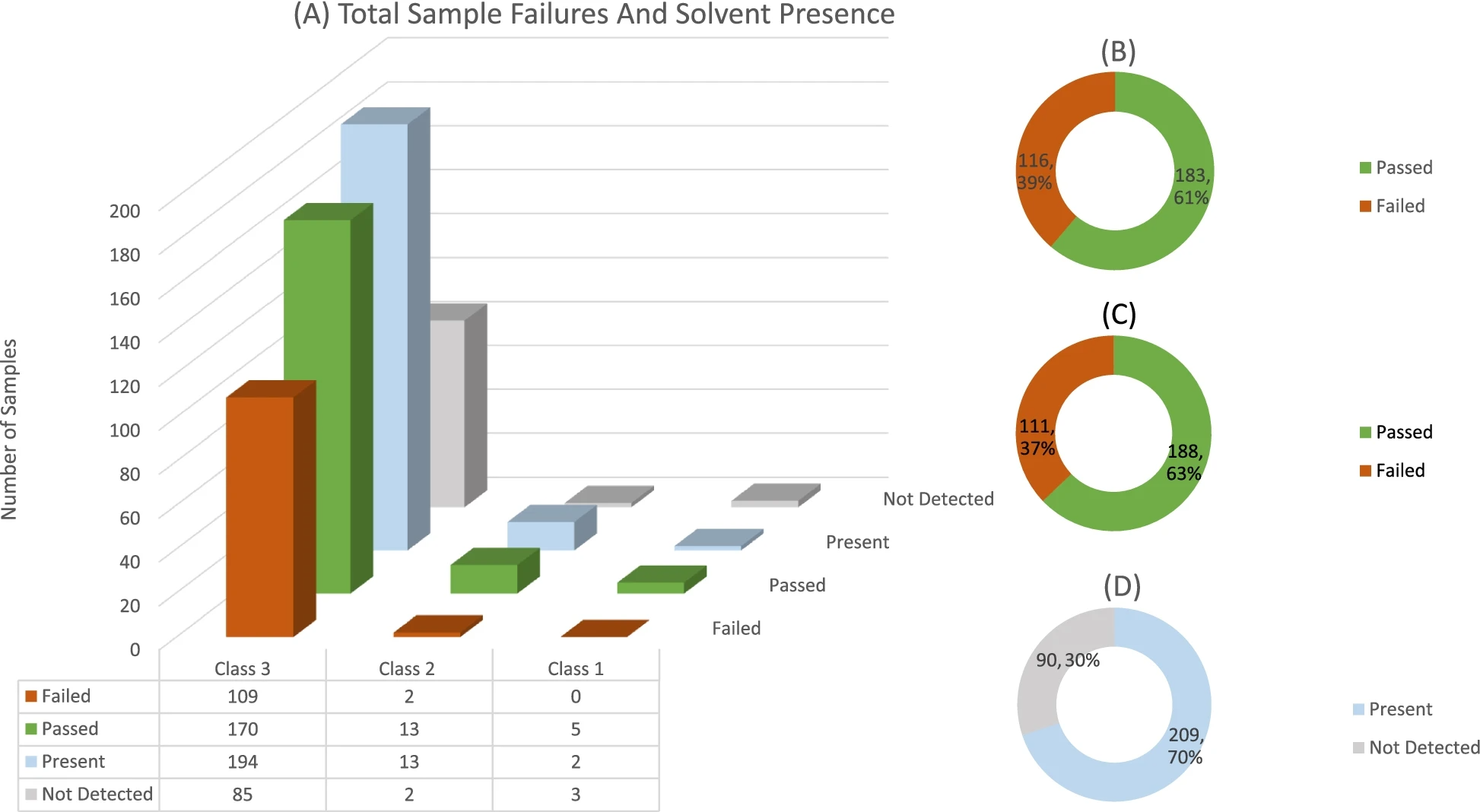Difference between revisions of "Template:Article of the month"
From CannaQAWiki
Jump to navigationJump to searchShawndouglas (talk | contribs) (Updated article of the month text.) |
Shawndouglas (talk | contribs) (Updated article of the month text.) |
||
| Line 1: | Line 1: | ||
<div style="float: left; margin: 0.5em 0.9em 0.4em 0em;">[[File: | <div style="float: left; margin: 0.5em 0.9em 0.4em 0em;">[[File:Fig1 Viviers JCannRes22 4.png|240px]]</div> | ||
'''"[[Journal: | '''"[[Journal:An assessment of solvent residue contaminants related to cannabis-based products in the South African market|An assessment of solvent residue contaminants related to cannabis-based products in the South African market]]"''' | ||
[[ | Organic [[solvent]]s are used for manufacturing herbal medicines and can be detected as residues of such processing in the final products. It is important manufacturers control the presence of these solvent residues for the safety of consumers. South African [[cannabis]]-based product [[Sample (material)|samples]] were analyzed for solvent residue [[Contamination|contaminants]] as classified by the ''[[United States Pharmacopeia]]'' (''USP''), chapter 467. The origin of these samples ranged anywhere from crude [[Cannabis concentrate|extract]] to product development samples and market-ready final products. Samples were submitted to a contract [[laboratory]] over a period of two years, from 2019 to 2021. To date, no data of this kind exist in South Africa ... ('''[[Journal:An assessment of solvent residue contaminants related to cannabis-based products in the South African market|Full article...]]''')<br /> | ||
<br /> | <br /> | ||
''Recently featured'': | ''Recently featured'': | ||
: ▪ [[Journal:Recent advances in electrochemical sensor technologies for THC detection—A narrative review|Recent advances in electrochemical sensor technologies for THC detection—A narrative review]] | |||
: ▪ [[Journal:Simultaneous quantification of 17 cannabinoids in cannabis inflorescence by liquid chromatography–mass spectrometry|Simultaneous quantification of 17 cannabinoids in cannabis inflorescence by liquid chromatography–mass spectrometry]] | : ▪ [[Journal:Simultaneous quantification of 17 cannabinoids in cannabis inflorescence by liquid chromatography–mass spectrometry|Simultaneous quantification of 17 cannabinoids in cannabis inflorescence by liquid chromatography–mass spectrometry]] | ||
: ▪ [[Journal:Potential of NIRS technology for the determination of cannabinoid content in industrial hemp (Cannabis sativa L.)|Potential of NIRS technology for the determination of cannabinoid content in industrial hemp (Cannabis sativa L.)]] | : ▪ [[Journal:Potential of NIRS technology for the determination of cannabinoid content in industrial hemp (Cannabis sativa L.)|Potential of NIRS technology for the determination of cannabinoid content in industrial hemp (Cannabis sativa L.)]] | ||
Revision as of 23:00, 22 August 2022
Organic solvents are used for manufacturing herbal medicines and can be detected as residues of such processing in the final products. It is important manufacturers control the presence of these solvent residues for the safety of consumers. South African cannabis-based product samples were analyzed for solvent residue contaminants as classified by the United States Pharmacopeia (USP), chapter 467. The origin of these samples ranged anywhere from crude extract to product development samples and market-ready final products. Samples were submitted to a contract laboratory over a period of two years, from 2019 to 2021. To date, no data of this kind exist in South Africa ... (Full article...)
Recently featured:
- ▪ Recent advances in electrochemical sensor technologies for THC detection—A narrative review
- ▪ Simultaneous quantification of 17 cannabinoids in cannabis inflorescence by liquid chromatography–mass spectrometry
- ▪ Potential of NIRS technology for the determination of cannabinoid content in industrial hemp (Cannabis sativa L.)
